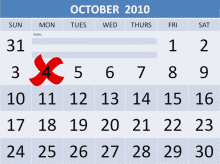This is an old post. A very old one. DSA is now DVSA. However, the points made are still valid.
While I was searching for news articles concerned with the impending change to the driving test, I came upon this one on the BBC website from May 1999. It relates to a previous change to the driving test, and makes hilarious reading.
Referring to the DSA’s Test Timeline , the changes made in 1999 were:
…extending the length of the test, randomising the emergency stop manoeuvre and failing candidates for committing 16 or more driving faults.
Today, we take this for granted and no one gives it a second thought. But look at the rubbish being spouted back then.
Keith Cameron, the head of road safety policy at the British School of Motoring (BSM), said: “Minor faults are minor faults, let’s face it.”
…Mr Cameron, a former chief examiner with the Driving Standards Agency, told BBC News Online: “Their argument is that if someone commits 15 faults they are not very good at driving so they should not be on the road.
“But nerves can affect someone’s performance on the day and if it’s only affecting in terms of minor faults then it should not matter.”
Mr Cameron said the Driving Standards Agency had conceded there would be a drop in the pass rate, but he said he thought they had underestimated how many people would fail under the new rules.
“It really is not difficult to ratchet up 15 minor errors,” he said.
This is hilarious! If someone gets anywhere near 15 faults they are a crap driver – on the day of the test, at least. Examiners can tell if someone is a poor driver or not, just as I can when I’m taking someone out for the first time who can allegedly drive.
Furthermore, he claims that the pass rate was going to fall. Let’s take a look at the reality – the DSA’s own pass rates for every year since 1935 (up until 2004 in this table) . Notice how the pass rate gradually fell from 63% in 1935 – with no big steps, and almost completely in a downwards direction year-on-year – to 45% in 1977, and then rose gradually back up to around 52% in the early 90s. It then gradually fell again to 47% in 1997.
There was a hiccup to 48% in 1998, and it dropped to 46% in 1999. It has been at 43-44% since then.
So, the worst you can say happened is that the new test introduced in 1999 caused the pass rate to fall by 5% (and that’s by taking the most extreme values). In reality, it was more like 2-3% – and even that doesn’t allow for any background fall that might have occurred anyway.
It’s not a lot when you consider that according to BSM’s Keith Cameron, the end of the world was nigh, is it?
So, just bear that in mind when you hear some of the rubbish being spread around about Independent Driving.

 Another likely issue is your seating position. If you sit too close to the pedals you’ll have to lift your foot from the ankle to a point where you put a strain on your shins. That can really make your foot and lower leg tired. To fix it, when you go through your cockpit drill first make sure your back is at a comfortable angle – then move the seat backwards or forwards until you can just push the clutch all the way to the floor without having to stretch. The ideal position will be around one or two clicks forward from there. What you want is to be able to comfortably push the clutch all the way in and still have a slight bend at the knee – but only a slight one. This way, when you operate the pedals your ankle will be doing it within its comfortable range without having to stretch to its limits.
Another likely issue is your seating position. If you sit too close to the pedals you’ll have to lift your foot from the ankle to a point where you put a strain on your shins. That can really make your foot and lower leg tired. To fix it, when you go through your cockpit drill first make sure your back is at a comfortable angle – then move the seat backwards or forwards until you can just push the clutch all the way to the floor without having to stretch. The ideal position will be around one or two clicks forward from there. What you want is to be able to comfortably push the clutch all the way in and still have a slight bend at the knee – but only a slight one. This way, when you operate the pedals your ankle will be doing it within its comfortable range without having to stretch to its limits. He isn’t too far off test standard, so I suggested that we could look at any date from the beginning of October. He was a bit unsure because it is “only 4 weeks away” – but then he had a thought and asked “when are they changing the test?”
He isn’t too far off test standard, so I suggested that we could look at any date from the beginning of October. He was a bit unsure because it is “only 4 weeks away” – but then he had a thought and asked “when are they changing the test?” I saw a great film last night on one of the movie channels.
I saw a great film last night on one of the movie channels. This one made me smile. Someone found the blog on the search term “driving test pass rates in October”!
This one made me smile. Someone found the blog on the search term “driving test pass rates in October”!